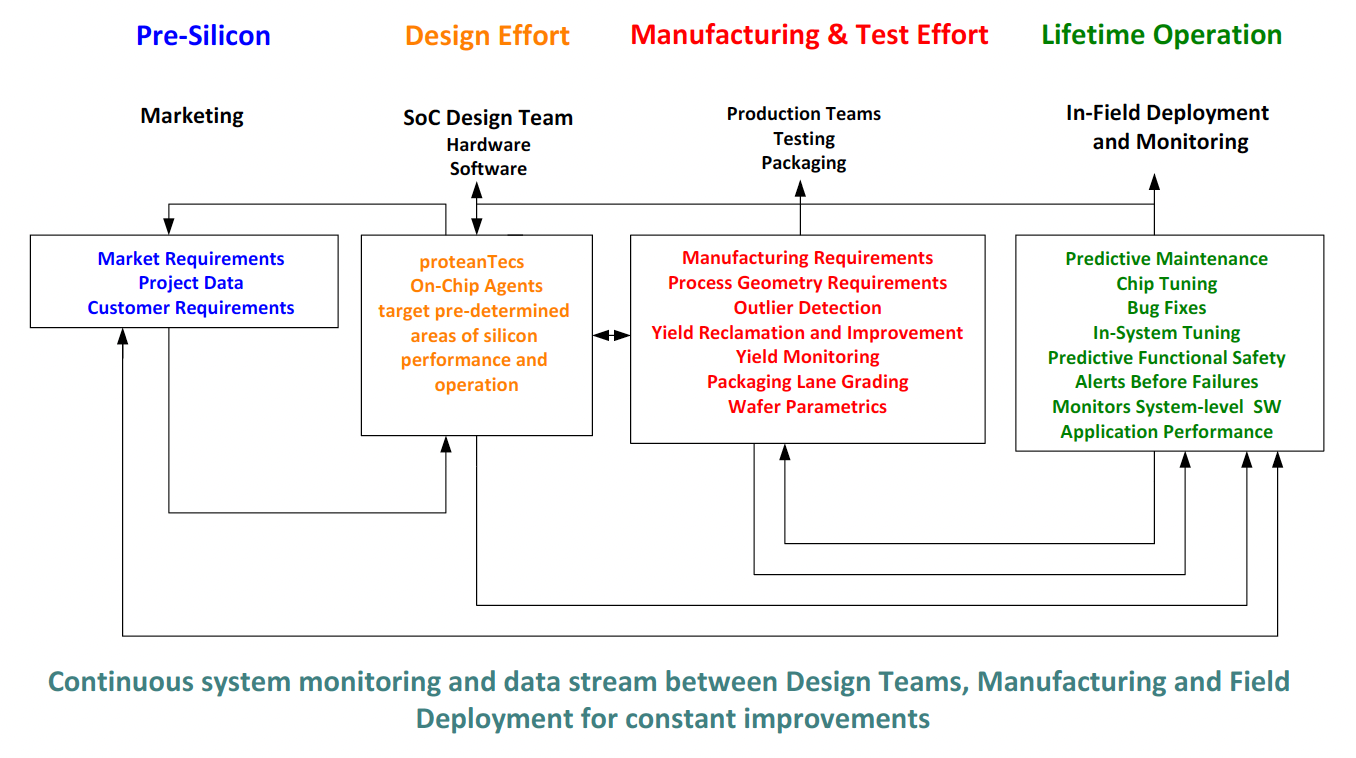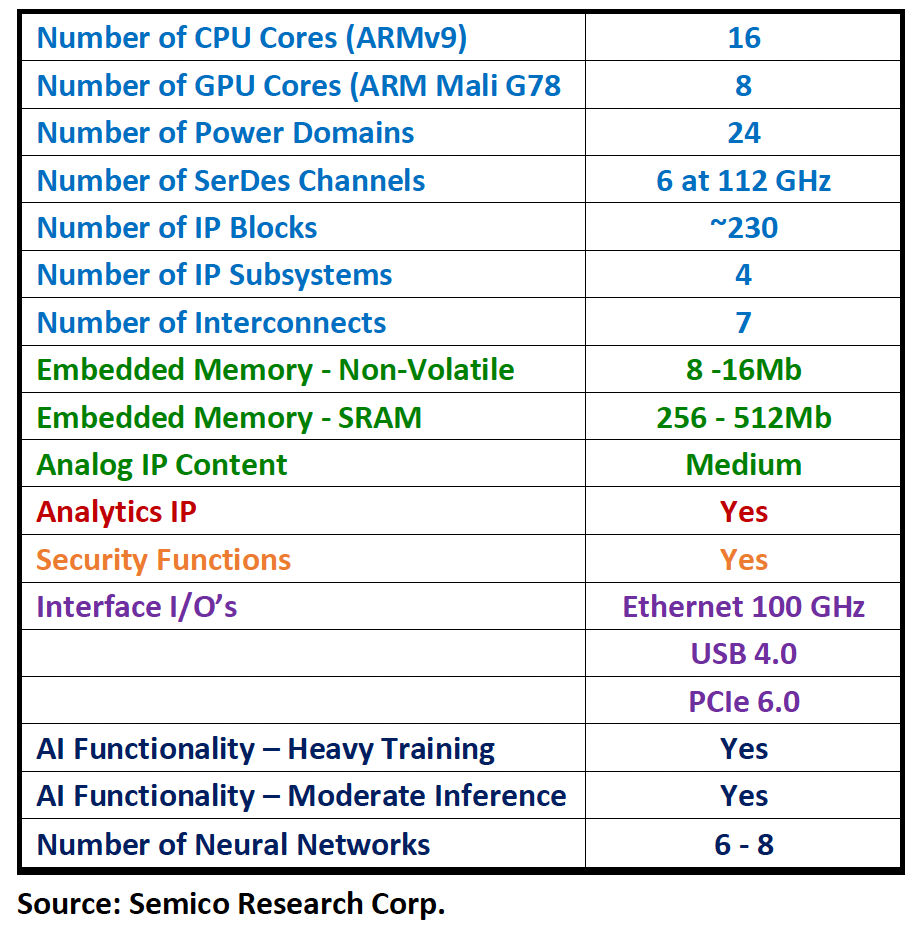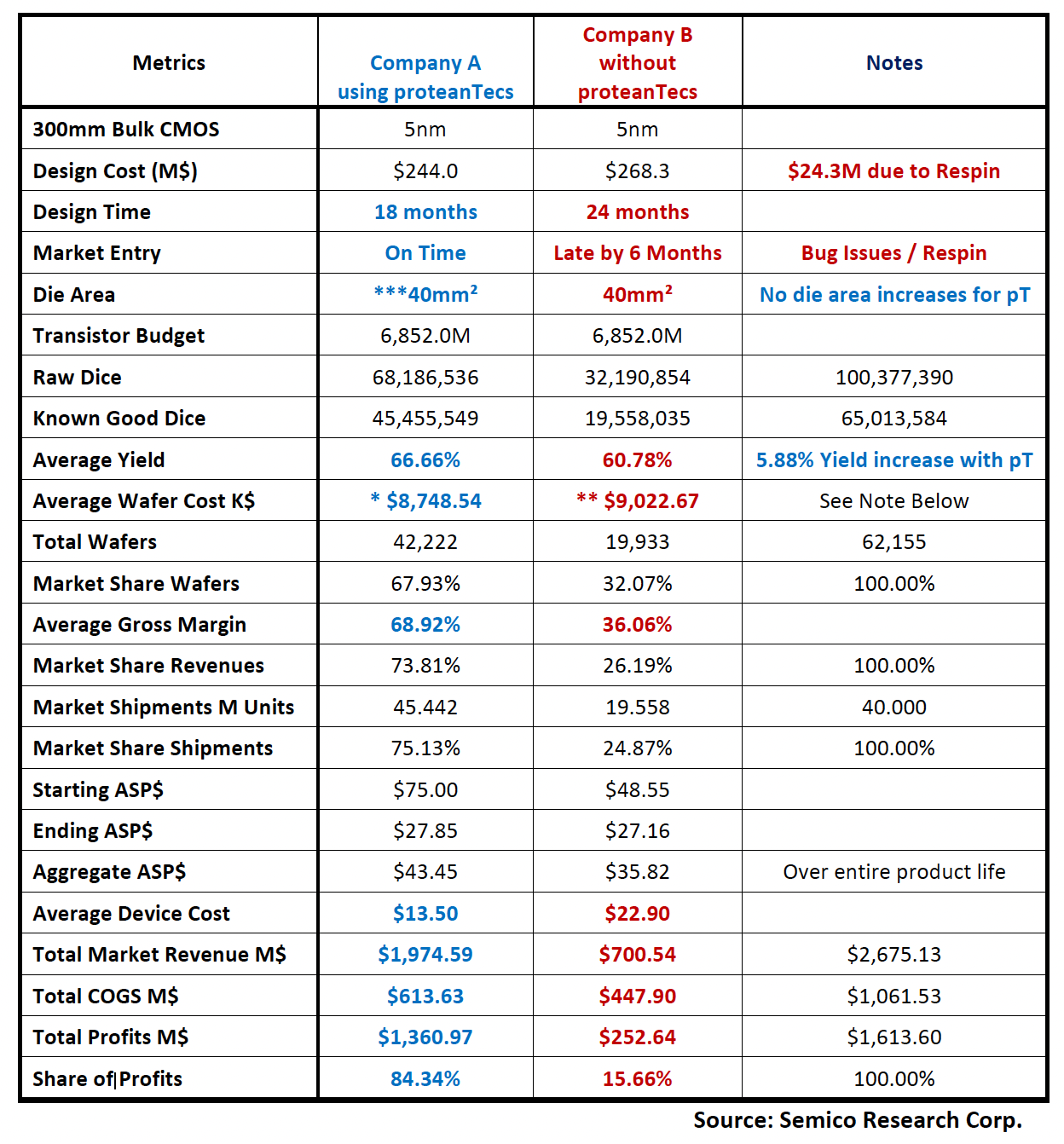Ever since the birth of the semiconductor industry, advances have always been at a fast pace. The complexity of SoCs have grown along the way, driven by the demanding computational and communication needs of various market applications. Over the last decade, the growth in complexity has accelerated at unforeseen rates, fueled by AI/ML processing, 5G communications and related applications. This of course has brought a strain on SoC product development cycles and time to market schedules.
Semico Research recently published a detailed report titled “Deep Data Analytics Accelerating SoC Product Development.” The report explains how deep data analytics can help accelerate all phases of an SoC product development including test and post-silicon management. proteanTecs deep data analytics technology and solution are spotlighted and the resulting benefits quantified and presented in a whitepaper. This post will cover some of the salient points from this whitepaper.
The proteanTecs Approach to Deep Data Analytics
The proteanTecs approach is to include monitoring IP into SoC designs and leverage machine learning algorithms to analyze the collected data for actionable analytics. The monitoring IP, referred to as on-chip Agents fall into four categories.
Classification and Profiling
These Agents collect information related to the chip’s basic transistors and standard cells. They are constructed to be sensitive to the different device parameters and can map a chip or a sub-chip to the closest matching process corner, PDK simulation point and RC model.
Performance and Performance Degradation Monitoring
These Agents are placed at the end of many timing paths and continuously track the remaining timing margin to the target capture clock frequency. They can be used to pinpoint critical path timing issues as well as track their degradation over time.
Interconnect and Performance Monitoring
These Agents are located inside a high bandwidth die-to-die interface and are capable of continuously detecting the signal integrity and performance of the critical chip interfaces.
Operational Sensing
These Agents turn the SoC into a system sensor by sensing the effects of the application, board or environment on the chip. They track changes in the DC voltage and temperature across the die as well as information related to the clock jitter, power supply noise, software and workload. The information gathered can be used to explain timing issues detected by the Performance and Degradation Agents. The collected information helps understand the system environment, for fast debug and root cause analysis.
The proteanTecs Deep Data Analytics Software Platform
The proteanTecs platform is a one-stop software platform that generates analytics from the data created by the on-chip Agents. It performs intelligent integration of the Agents and applies machine learning techniques on the Agent readouts to provide actionable analytics. The platform is centered on the principle of continuous monitoring and improvements and implements a continuous feedback loop as shown in the Figure below.

The platform feeds relevant real-time analytics to the appropriate teams who are responsible to take corrective actions. Depending on the type of analytics feedback, the recipients would be the marketing group, SoC hardware and software group, the manufacturing team or the field deployment and support team.
Benefits of Adopting the proteanTecs Approach
Design teams can use the data to understand how the different chip parameters are affected by various applications and environmental conditions over time. With this type of insight from the current product, the next product can be better planned.
With the in-field monitoring, predictive maintenance can be performed and when something does fail unexpectedly, debugging becomes easier and quicker. The conditions leading to the failure can be easily recreated right in the field and the fix accomplished in a much shorter time.
Analytics shared with the software team can be used to identify and fix bottlenecks between the silicon and the software during different operations.
A further benefit could be the monetization of the data stream between the system developer and the end customers. For example, auto manufacturers could provide data to their customers on how a vehicle is operating under different road conditions, so that performance could be optimized. Data centers could provide insights to their customers on how different loading factors impact response times and latencies.
There are multiple possibilities for monetization of the data streams established via the proteanTecs approach. This could open up an additional revenue stream to the owners of such a platform.
The Quantifiable Business Impact Results
In the report, Semico includes a head-to-head comparison of two companies designing a similar multicore data center accelerator SoC on a 5nm technology node. This assessment is used for understanding the quantifiable benefits of using the proteanTecs approach. The design profile and metrics of this sample SoC is presented in the Table below.

The following Table shows the quantifiable benefits of using the proteanTecs approach as it pertains to market metrics and sales results.

Summary
The proteanTecs chip analytics platform helps drive the process of SoC design, manufacturing, testing, bring-up and deployment for a significant market advantage. It performs deep dive analytics on data captured from silicon and systems to identify potential problems in all phases of the lifecycle of an SoC. The emergence of such deep data analytics solutions will benefit the electronics industry as problems can now be avoided during the development stage and in-field issues corrected rapidly.
For more details about the proteanTecs platform, visit https://www.proteantecs.com/solutions.
You can download the Semico Research whitepaper from the proteanTecs website.
Also Read:
proteanTecs Technology Helps GUC Characterize Its GLink™ High-Speed Interface
Elevating Production Testing with proteanTecs and Advantest’s ACS Edge™ Platforms
CEO Interview: Shai Cohen of proteanTecs
Share this post via:





Comments
There are no comments yet.
You must register or log in to view/post comments.